Best Time of Year to Visit Iceland in 2025
It can be tricky figuring out the best time of year to visit Iceland. There's a lot to consider between daylight hours, the likelihood of seeing the northern lights, crowds, pricing, and more.
I visited Iceland for one week a few years ago. To decide when to go, I did extensive planning, researching online and talking to many friends who had been at various points during the year.
After all my research, I decided to visit in March and can confirm I found it to be a perfect time for my first Iceland trip. However, I'd love to visit again and see what Iceland is like at another time of year.
Keep reading to learn all the ins and outs on what you should consider when deciding the best time of year to visit Iceland for you.
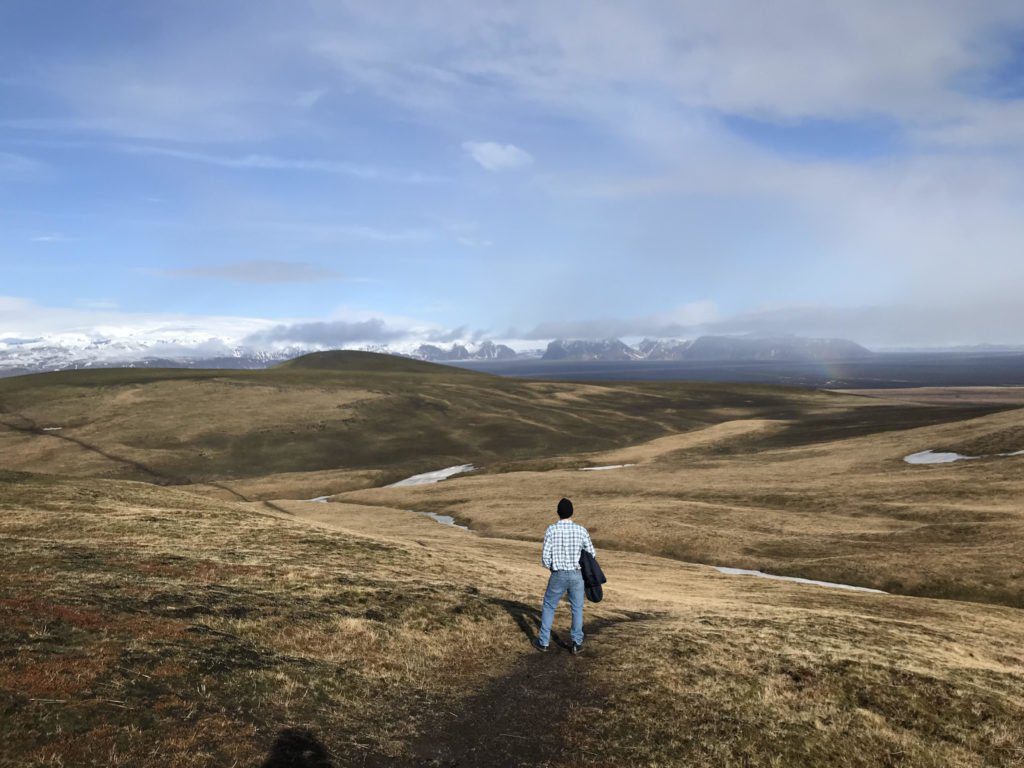
Best Time of Year to Visit Iceland
If you’re looking to experience a variety of Iceland’s highlights, March and October are some of the best months to visit. You have a chance of seeing the northern lights, can experience ice caves, and drive around most of the island’s main roads.
Weather isn’t too bad at these times of year, and you’ll encounter fewer crowds as well. That said, know that some roads will be closed in even in the spring and fall due to snowfall and icy conditions.
I personally had no issues visiting in March and seeing all of the main sights. I drove the Golden Circle, all over the southern end of the Ring Road—the main highway around Iceland—and around the Snaefellsnes Peninsula without any issues.
There’s a lot to consider when figuring out the best time of year to visit Iceland for you. Each month offers its own pros and cons, and you might prefer to visit at a different time depending on what you want to get out of your trip.
Here are some considerations to take into account as you figure out when you want to go to Iceland.
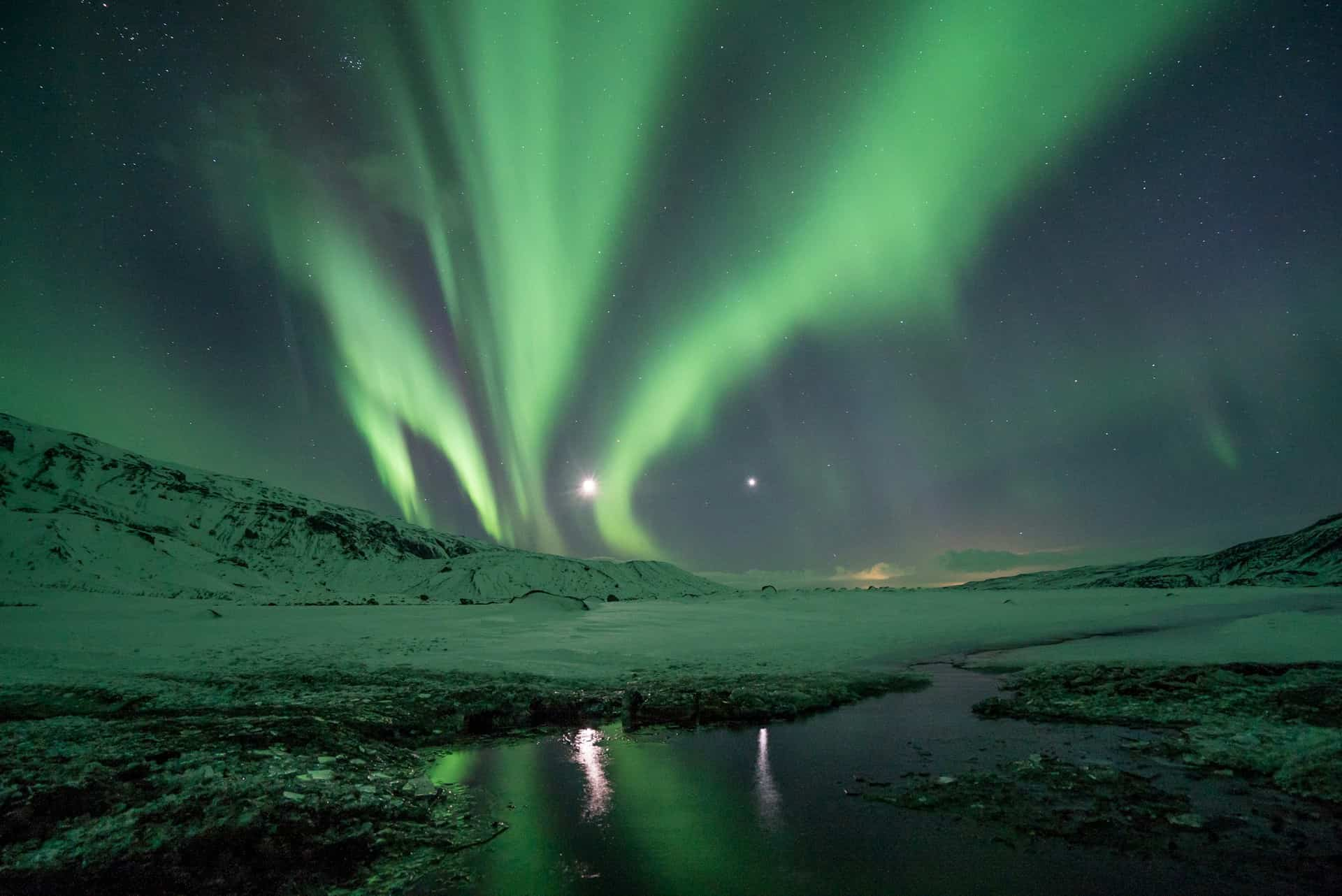
Best Months to See the Northern Lights from Iceland
You can see the northern lights as early as late August through mid-April. You’re most likely to see them when the sky is clear and dark and temperatures are cold, so I’d recommend trying to see them between September and March, when chances are higher.
Solar activity increases around the equinoxes, so if you want to see a more vibrant lights display, it’s a good idea to plan your trip around March 20, September 22, or December 21.
Northern Lights Tour
While certain times of year offer a high chance of seeing the northern lights, it can still be hard to predict when they'll be coming out. I wish I had booked a tour like this to ensure I had experts helping me see them. With this tour, if you don't see the northern lights, you can go on another tour later free of charge.
➡️ Get Northern Lights Tour Information
Best Months to Go Hiking in Iceland
If you’re looking for the best time of year to visit Iceland for hiking, then you should plan to go in June, July, or August. Weather is most pleasant during those months, and you’ll find that more of the roads and hiking trails are open too.
I visited in March and did some hiking, but some of the areas I wanted to visit were closed. I also found it quite cold and preferred to dash back to my rental car rather than walk around outside for too long. That said, I probably could have prepared better with my warm weather gear.
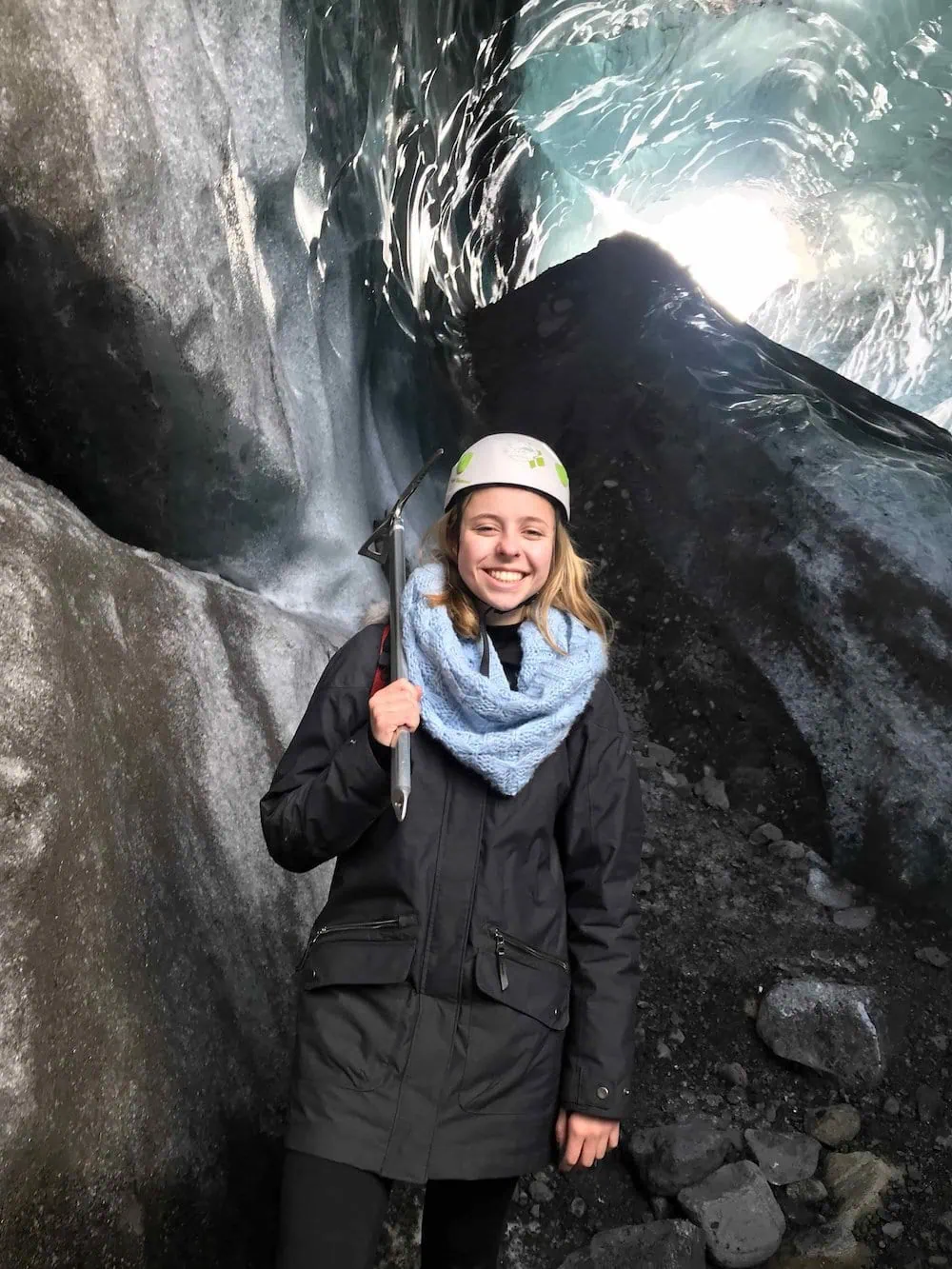
Best Time of Year to Visit Iceland for Glacier Hiking
While summer is best for regular hiking, March is one of the best times of year to visit Iceland for glacier hiking, which is an absolute must when visiting Iceland. You can go at other times of year, but March offers some of the best conditions.
When I went on a glacier hike in March, my guide told me March is one of the best months for it. While the ice is a beautiful blue color in winter, it’s so frozen solid that it can be very difficult to grip with crampons.
In summer, you can still go on glacier hikes, but my guide said that the ice is slushier and leads to people rolling their ankles. Plus, in warmer months, you likely won’t be able to see ice caves as they will be too dangerous to visit as the ice melts and becomes unstable.
Guided Glacier Hike
To do a glacier hike in Iceland, you have to book with a guide. This is the hike I booked from Skaftafell, and I highly recommend it.
➡️ Get Glacier Hike Information
Best Months to See Whales in Iceland
Iceland is one of the best places in the world for whale watching as its waters are home to around 23 whale species. Some parts of Iceland offer whale watching tours year-round, but the best time to see whales in Iceland is between April and late September.
Whale Watching Tour
It's best to take a boat tour to see whales. This tour leaves from Reykjavík on a cozy yacht.
➡️ Get Whale Watching Tour Information
Best Time of Year to Visit Iceland for Seeing Puffins
May through August is the best time of year to visit Iceland for seeing puffins. As the weather warms, these lovable birds typically arrive around late-April or May to lay eggs and raise their young before leaving again in September before the weather gets too cold.
Puffin Tour
Join this highly-rated tour to see puffins and other sea birds. It's a fairly quick tour from Reykjavík by boat.
➡️ Get Puffin Tour Information
Busiest Months to Visit Iceland
While June, July, and August are the best time of year to visit Iceland for good weather, they’re also the busiest. The good weather means most roads and tourist attractions are open and brings more crowds.
As these are the most popular months to visit Iceland, accommodations, rental cars, and flights tend to be more expensive.

Worst Time of Year to Visit Iceland
The worst time to visit Iceland really depends on what you’re looking for in your trip. If you can’t stand the cold, then I’d recommend avoiding December, January, and February and opting to visit in spring or fall instead.
If you want to see the northern lights, avoid visiting in the summer. However, if you don’t care as much about the northern lights and want to get better hiking in, then you’ll want to avoid colder months.
Iceland Weather by Month
As you think about the best time of year to visit Iceland, you’ll definitely want to take a look at the weather. While Iceland weather is unpredictable and you should be prepared to experience as many as all four seasons in a day, it’s helpful to get a general sense of what the weather is like.
Here’s a breakdown of typical weather by month for Reykjavík, Iceland’s capital based on data from Weather Spark.

January
January is quite cold with an average high of 36°F (2°C) and low of 28°F (-2°C) in Reykjavík. This month typically sees strong winds and large amounts of snow. It’s also the second darkest month of the year, with just 5.5 hours of daylight on average per day.
With such long and cold nights, there’s a high likelihood of seeing northern lights when skies are clear.

February
February is similarly cold with heavy snowfall and high winds. Daylight starts to increase, but nights are still quite long with a high likelihood of seeing northern lights.
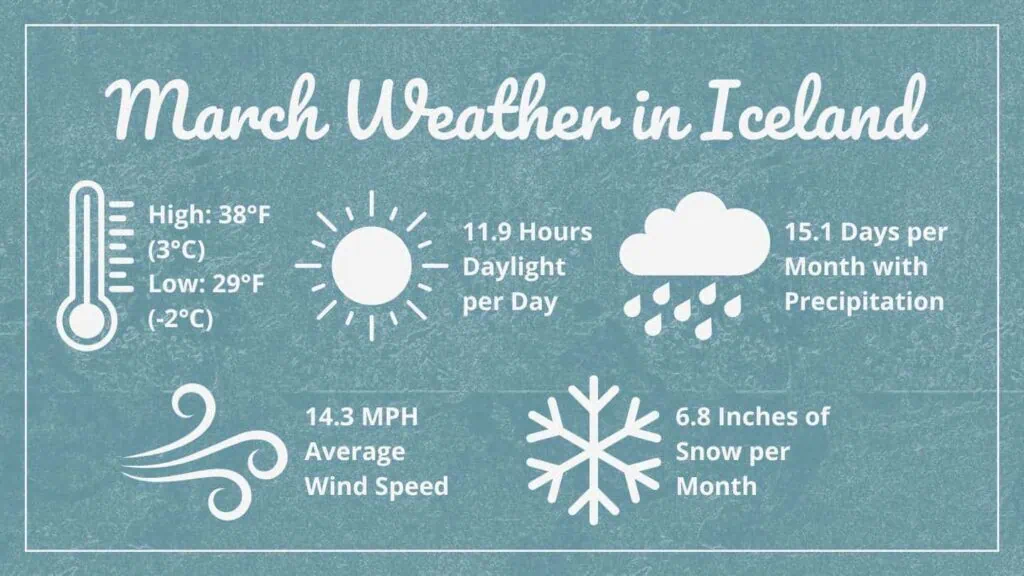
March
Temperatures remain cold in March with an average high of 38°F (3°C) and low of 29°F (-2°C). Wind speeds and snowfall drop slightly, and average daylight increases significantly to almost 12 hours per day.
Even though nights get shorter in March, you can still frequently see the northern lights. March sees fewer winter storms and often has clearer skies than earlier in the year, helping with northern lights visibility.
In addition, you may see more vibrant northern lights around the spring equinox when solar winds are more powerful.
I personally visited Iceland at the end of March and still found it to be quite cold for the most part. The wind was often blowing so heavily that you had to be careful opening car doors. That made it feel much colder than it was.
The skies were also often gray without much sun. The sun did come out a few times though, and there was one day where I actually felt quite hot walking around. Just the day beforehand, I had experienced rain and snow though.

April
Weather in April continues to improve with slightly warmer days with an average high of 42°F (6°C) and low of 33°F (1°C) in Reykjavík. There’s less wind and significantly less snow. While daylight really starts to increase, there’s still a high chance of seeing the northern lights in early- to mid-April.

May
May brings the start of much more pleasant weather in Iceland. Temperatures are much more comfortable, with an average high of 49°F (9°C) and low of 39°F (4°C).
There’s little snow in Reykjavík and fewer days with precipitation. Plus, average wind speeds die down to around 10 miles per hour (MPH).
May sees an average of 18.5 hours of daylight per day, so there’s a very low chance of seeing the northern lights at this time.
On the other hand, visiting in May means some roads will start opening up that had been closed in winter.
For instance, the Westfjords tend to be cut off from the rest of the country earlier in the year and after September due to heavy snowfall. They’re considered by many to be the most beautiful part of Iceland, so if you’re hoping to see them, May is the first month you could consider doing so.

June
June means the start of Iceland’s famous midnight sun. The month sees an average of 20.9 hours of daylight per day.
The midnight sun gives you more time to explore each day but also means that you won’t be able to see the northern lights.
Weather is quite pleasant with an average high of 54°F (12°C) and low of 45°F (7°C). Wind speeds are lower, and the number of days with precipitation is at its lowest point for the year.
With weather significantly improving, mountain F-roads and hiking trails that close for winter will typically start opening up sometime in June.

July
Weather is similarly nice in July and gets slightly warmer with an average high of 56°F (13°C) and low of 48°F (9°C). The midnight sun continues with an average of 19.5 hours of daylight per day.

August
Temperatures remain steady into August with an average high of 56°F (13°C) and low of 47°F (8°C). Precipitation picks up, but in Reykjavík, it’s all rain.
Daylight starts decreasing, and you can start seeing the northern lights around the end of the month.

September
Temperatures start dropping in September. In Reykjavík the average high is 51°F (11°C) and low is 42°F (6°C). Precipitation and wind speeds pick up, but there’s not yet snow in the city.
With daylight continuing to decrease, there’s a high chance of seeing the northern lights in September. Increased solar activity around the equinox can lead to a more vibrant aurora.
As weather starts to get colder and precipitation increases, this tends to be the last month to visit the Westfjords before most roads to access the region close. Many interior F-roads will also start closing in September.

October
Temperatures drop significantly in Reykjavík in October with an average high of 44°F (7°C) and low of 36°F (2°C). The amount of precipitation remains the same with almost half of days in the month seeing precipitation (mostly rain).
There’s a high chance of seeing the northern lights with nights getting longer in October.

November
Weather in Iceland continues to get colder, darker, and snowier in November. The average high is 39°F (4°C) and low is 32°F (0°C). There’s a high chance of seeing the northern lights with increasingly longer nights.

December
December is the darkest month of the year in Iceland. There’s just 4.4 hours of daylight per day on average. On the winter solstice, the sun typically rises at 11:22 a.m. and sets at 3:29 p.m.
These dark, long nights mean you have a high chance of seeing the northern lights in December. Higher levels of solar activity around the solstice mean you may also see more vibrant lights.
December is quite cold with an average high of 37°F (3°C), low of 29°F (-2°C), and average wind speed of 15.2 MPH. Half the month sees precipitation with an average of 8.3 inches of snow in Reykjavík.
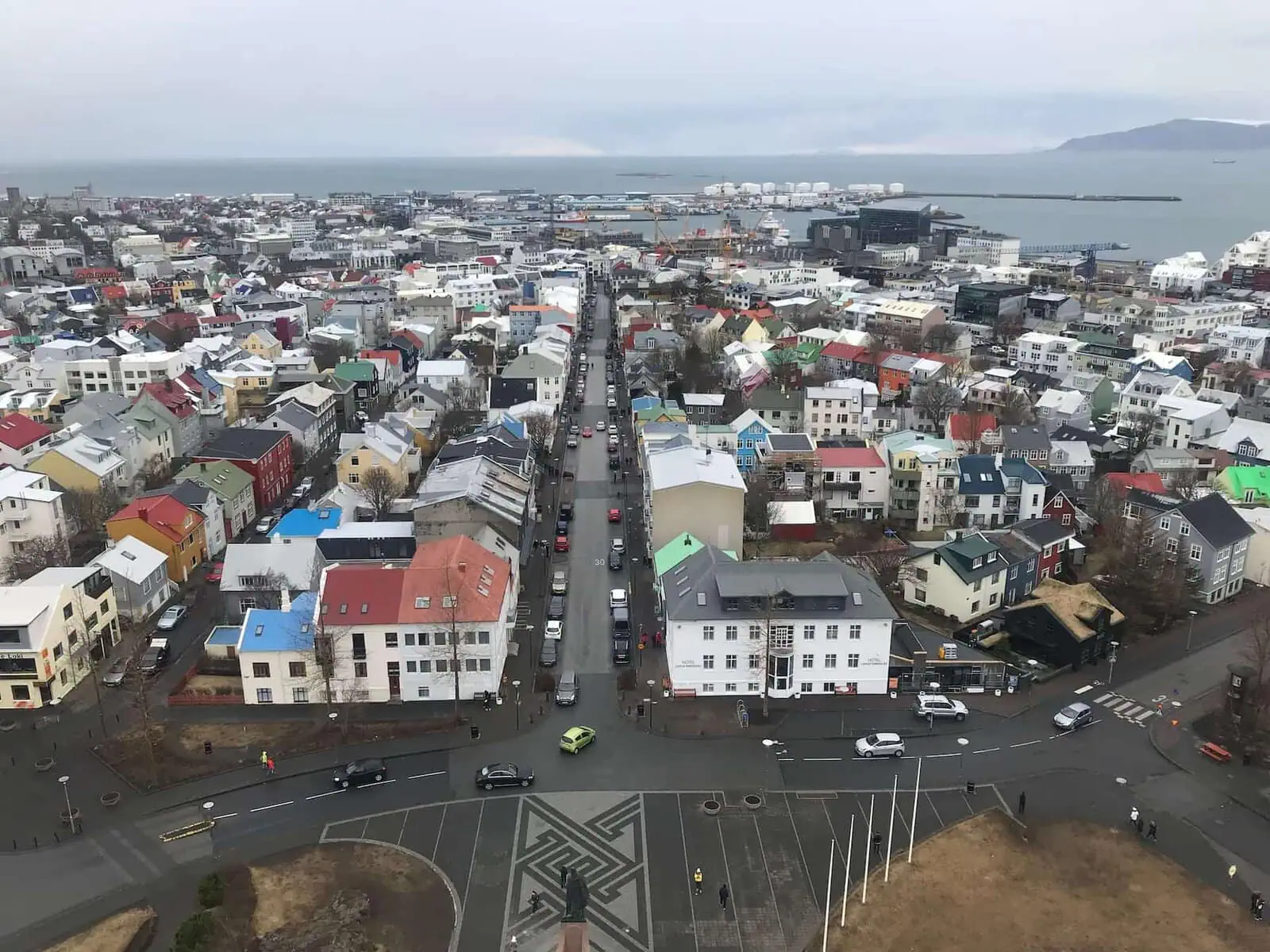
Where to Stay in Reykjavík
As you plan your Iceland trip, you will undoubtedly spend at least one night in the country’s capital of Reykjavík. Here are a few accommodation options in the city.
📍Budget Option: Loft Hi Eco Hostel is one of the highest rated hostels in Reykjavík. It’s centrally located and has a variety of room types at a range of prices.
📍Mid-Range Option: Alfred’s Studios is a highly rated guest house with well-priced small rooms located in the city center.
📍Luxury Option: The Reykjavík Edition is one of the nicest hotels in all of Iceland. This modern hotel under the Marriott folio has stunning views of the water and mountains beyond and has a spa, restaurant, bar, and other amenities.

Frequently Asked Questions
Here are some answers to frequently asked questions to help you figure out the best time of year to visit Iceland and prepare for your trip.
What is the cheapest time to go to Iceland?
September through November and January through May tend to be the cheapest months to visit Iceland. There are fewer crowds and often better flight and accommodation deals during these months.
How many days in Iceland is enough?
I recommend at least a week in Iceland if possible. I spent a week there myself and felt like I was able to see most of the highlights. However, if you only have a few days, you can still see some of the main highlights around Reykjavík.
More days are even better if you want to see more of the country. If you want to drive Iceland’s 825-mile (1,328 km) Ring Road around the country, I recommend giving yourself 10 days to do so if possible.

How long is the flight from the US to Iceland?
Iceland is much closer to the United States than the rest of Europe, making the flight time to get there a bit shorter. Most direct U.S. flights take around 6 to 8 hours depending on where you’re coming from.
For instance, flying to Reykjavík from New York City takes almost 6 hours, whereas traveling from Denver takes around 8.
What time of year is Iceland the most beautiful?
Iceland is incredibly beautiful year-round, so it’s hard to say when it’s most beautiful. It’s one of those rare places on earth that feels other worldly and evokes such awe and wonder no matter the season.
With the northern lights and snow and ice, some say winter is the most beautiful time of year to visit Iceland. Others say summer is more beautiful as flowers come to life and wildlife is out and about.
I’ve only been in March, and even then, in between the extremes of summer and winter, I found the country to be so stunning. From the black sand beaches to bright blue glaciers and massive waterfalls, Iceland is stuffed to the brim with beauty. Its remoteness adds to the beauty and other worldly feel that I’ve rarely experienced anywhere else.
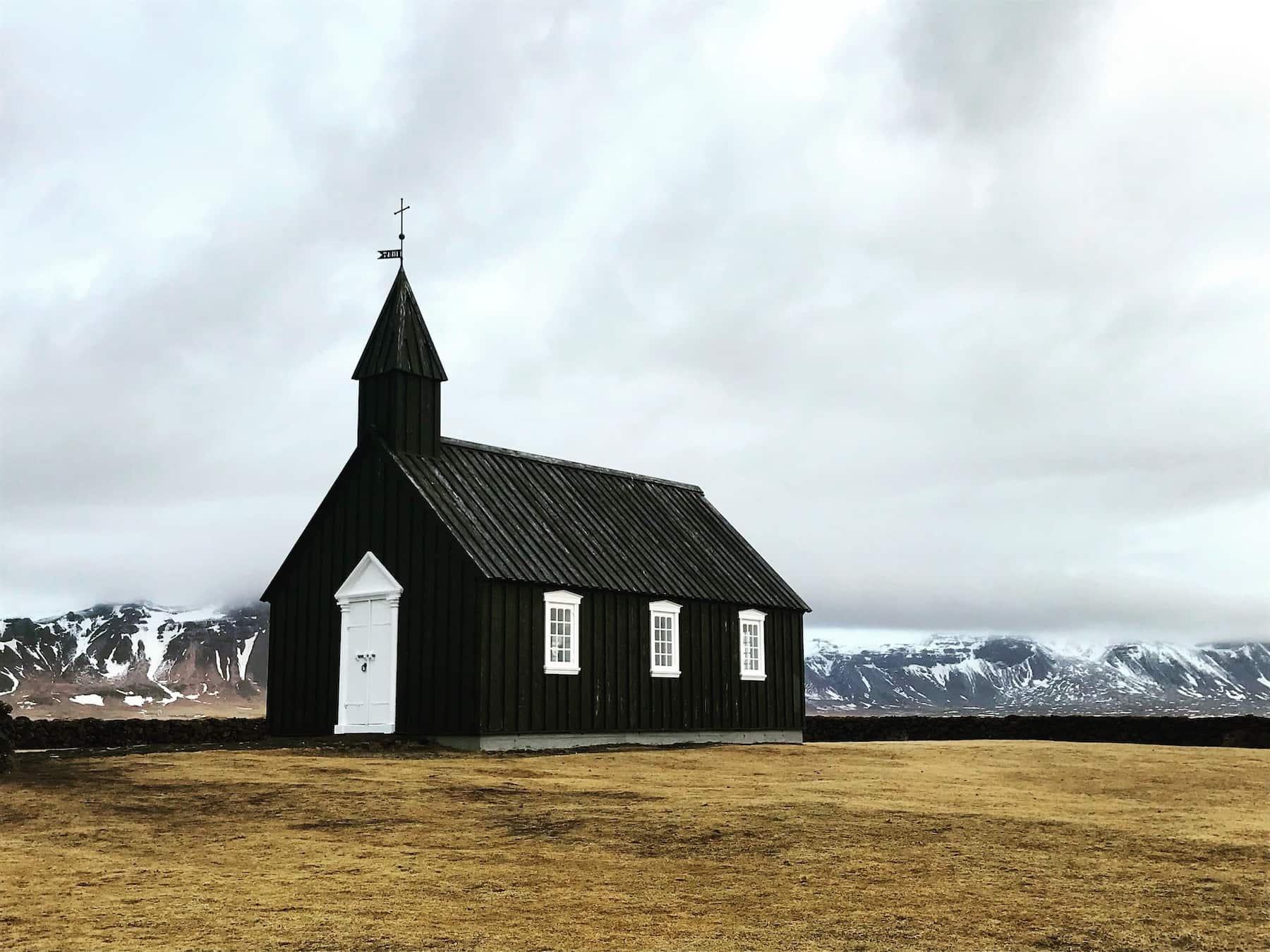
Do they speak English in Iceland?
English is widely spoken in Iceland. I recommend trying to learn a few Icelandic phrases out of respect, but you should have no problem visiting the country only knowing English.
Is Iceland expensive to visit?
Iceland is one of the most expensive countries in the world. I found accommodations, food, and gas to all be quite expensive.
I visited Iceland when I was less than a year into my first job and made very little money. I made the trip more affordable by staying at guest houses where I had my own room but a shared bathroom. I also bought groceries and lived off of peanut butter and jelly sandwiches and microwaveable noodles for most of the trip.
Conclusion: Best Time of Year to Visit Iceland
There you have it! I hope this post helped you determine the best time of year to visit Iceland for you. This country is one of my favorites in the world and absolutely worth the visit whenever you can make it happen.



